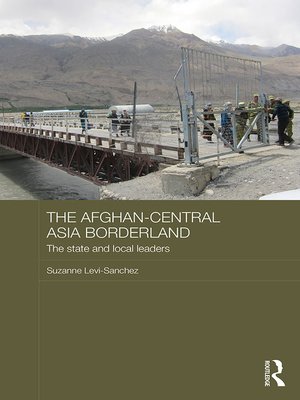The Afghan-Central Asia Borderland
ebook ∣ The State and Local Leaders · Central Asian Studies
By Suzanne Levi-Sanchez

Sign up to save your library
With an OverDrive account, you can save your favorite libraries for at-a-glance information about availability. Find out more about OverDrive accounts.
Find this title in Libby, the library reading app by OverDrive.



Search for a digital library with this title
Title found at these libraries:
| Library Name | Distance |
|---|---|
| Loading... |
Based on extensive, long-term fieldwork in the borderlands of Afghan and Tajik Badakhshan, this book explores the importance of local leaders and local identity groups for the stability of a state's borders, and ultimately for the stability of the state itself. It shows how the implantation of formal institutional structures at the border, a process supported by United Nations and other international bodies, can be counterproductive in that it may marginalise local leaders and alienate the local population, thereby increasing overall instability. The study considers how, in this particular borderland where trafficking of illegal drugs, weapons and people is rampant, corrupt customs and border personnel, and imperfect new institutional arrangements, contributed to a complex mix of oppression, hidden protest and subtle resistance, which benefitted illicit traders and hindered much needed humanitarian work. The book relates developments in this region to borderlands elsewhere, especially new borders in the former Soviet bloc, and argues that local leaders and organisations should be given semi-autonomy in co-ordination with state border forces in order to increase stability and the acceptance of the state.







